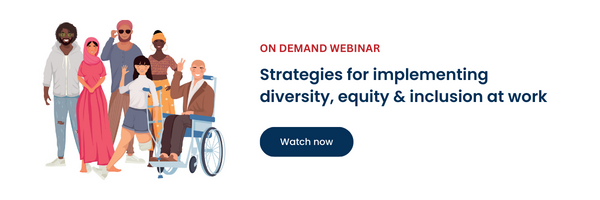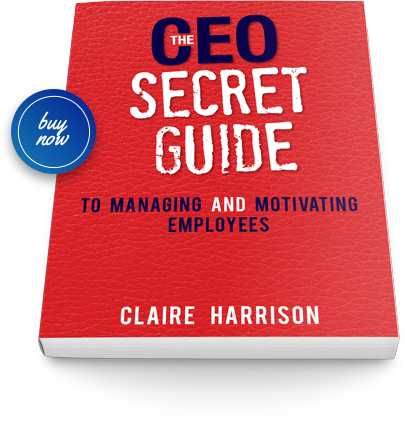Sexual harassment is, very unfortunately, a much too common experience in the workplace.
The 2018 Sexual Harassment Survey revealed that 1 in 3 Australian workers reported having experienced sexual harassment in the previous 5 years and only 17% of those people made a complaint. Many were afraid to report their experiences out of fear of not being believed or that it would damage their career.
Employers have ethical and legal obligations to fully understand sexual harrassment legislation so that they are best positioned to prevent it from happening within their teams.
Defining sexual harrassment in the workplace
Sexual harassment is defined in section 28A of the Sex Discrimination Act 1984 (Cth) as:
“An unwelcome sexual advance, request for sexual favours, or other unwelcome conduct of a sexual nature, in circumstances where a reasonable person, having regard to all the circumstances, would have anticipated the possibility that the person harassed would feel offended, humiliated or intimidated.”
To truly understand this definition, particular focus needs to be given to the precursor that a reasonable person only needs to anticipate the possibility that the other person would be offended, humiliated or intimidated.
In various sexual harrassment claims brought before the courts, the following behaviours were found to be instances of sexual harrassment within the legal definition.
Examples of sexual harrassment:
- Sending sexual text messages
- Sending a Valentine’s day card
- Touching a co-worker who was asleep at work
- Sending emails professing love/romantic feelings
- Asking for hugs
- Propositioning an employee on a work trip
- Jokes and banter with sexual connotations (e.g. a crude drawing posted on a wall)
- Sharing an Instagram post of a ‘sexual nature’ with a co-worker outside of work hours
- Sending a pornographic video to co-workers via Facebook outside of work hours
Damages awarded in recent sexual harrassment cases
Managers and employers who fail to foster a safe work environment and properly address instances of sexual harrassment are liable to face expensive court cases.
The outcomes of the following cases will give you an idea of how much the courts are able to award for damages, loss of income and future loss of earnings.
- Golding v Sippel (2021) – damages increased on appeal to $130,000 + loss of income ($29,000)
- Hill v Hughes (2019) – $120,000 general damages, aggravated damages $50,000
- Green v State of Queensland (2017) – $70,000 non financial loss, $17,000 loss of earnings, $48,000 future loss of earnings, $10,000 future cost of treatment
- Richardson v Oracle – damages increased from $18,000 to $100,000 by the Federal Court
No business, regardless of size, wants to face such costly litigation. Nor should any business want their employees to feel disrespected and unsafe at any time.
Sexual harrassment laws do change from time to time due to new precedents set by legal cases as well as legislative changes at various levels of government. So it’s up to managers, supervisors and HR professionals to keep up to date with any changes in order to protect employees and their business as a whole.
Upcoming changes to sexual harrassment laws
The Anti-Discrimination and Human Rights Legislation Amendment (Respect@Work) Bill was first introduced on 27 September 2022, however it has not formally passed into law yet (at time of writing October 2022). Though the Albanese Government has promised to implement all 55 recommendations from the report, plus a further 7 recommendations.
The proposed amendments include:
- A positive duty to be imposed on employers to take reasonable and proportionate measures to eliminate workplace sexual harassment, victimisation and sex discrimination as far as possible
- New powers for the Australian Human Rights Commission to assess and enforce compliance
- A prohibition on conduct that subjects another person to a workplace environment that is hostile on the ground of sex
- Introducing “cost neutrality” cost protection provisions for complainants
- Requiring Commonwealth public sector organisations to report to the Workplace Gender Equality Agency
Let’s take a closer look at positive duty as it is perhaps the most pertinent amendment for employers to understand and enact change on.
Positive duty
When the Bill is passed, it will place a formal onus on employers to take “reasonable and proportionate” measures to eliminate sex discrimination, sexual harassment and victimisation, as far as possible. The duty will extend to conduct by third parties such as customers or clients
This shifts the burden from individuals making sexual harrassment complaints to employers taking proactive and preventative action. As the positive duty is an ongoing duty, the emphasis needs to move away from a complaints-based model to one where employers must continuously assess and evaluate whether they are meeting the requirements of the duty.
Strategies for building a culture of positive duty
There’s no shortage of best practices that employers can enact in order to foster an environment of positive duty. Strategies need to focus on education, combating silence as well as formal governance. The following strategies are being proactively utilised already, especially in medium to large sized companies.
Education, training and recruitment
- Implement and continually review workplace policies which promote a respectful and inclusive working environment
- Run regular and compulsory training on appropriate workplace behaviour
- Conduct criminal record checks
- Implement drug and alcohol policies regulating workplaces and out of hours conduct at work functions (given the link between alcohol/drugs and incidents of sexual harrassment)
- Create respectful behaviour campaigns to identify and call out disrespectful behaviour for employees and contractors (identifying the behaviour, appreciating its impact, recognising that it is happening, understanding what action can be taken, and where to go for support)
- Give KPIs to senior management around inclusion, diversity and gender representation and compliance with programs for elimination of sexual harassment
- Bolster pre-employment questionnaires around allegations, investigations or convictions of sexual assault, sexual harassment or crimes of a violent nature
Combat silence and bystanders
- Run confidential anonymous surveys about workplace culture including if workers have experienced sexual harassment
- Ensure clear confidential avenues to address any claims (e.g. speak up lines)
- Implement mandatory reporting of sexual harassment by managers and leaders
- Create specialised teams for the most serious investigations to build confidence in the system and improve the experience for those involved
- Ensure victim-centric investigations (confidentiality, increased communication and support, specialist advice from experts including tailored EAP)
Governance
- Respond to claims thoroughly and take appropriate disciplinary action
- Treat sexual harassment as a safety issue (including risk assessments, controls and reporting)
- If findings of sexual harassment are substantiated, require the decision maker to say why termination was not decided on if a lesser form of disciplinary action was taken
- Require executive approval in the above cases where the perpetrator was not terminated
Overall, it’s best to seek professional HR guidance to conduct best practice reviews to ensure your business is compliant with sexual harrassment laws. For advice, talk to the experts at Harrisons today.
Claire Harrison is the Founder and Managing Director of Harrisons, a flourishing HR consulting business that sprouted in 2009 from Claire’s passionate belief that inspiring leaders and superstar employees are the key success factor to any business. With over 20 years’ experience, Claire has worked as a HR Director of multi-national organisations, as a Non-Executive Board Director, and a small business owner. Claire’s corporate career includes working with companies such as BHP, Westpac, Fonterra and Mayne Nickless.





